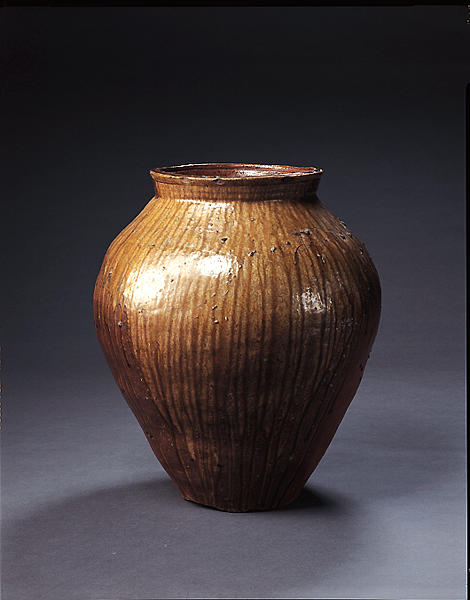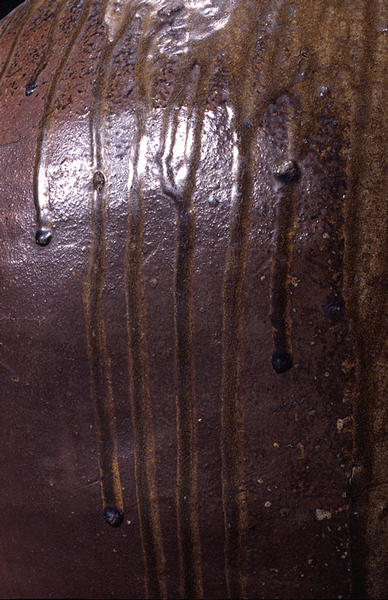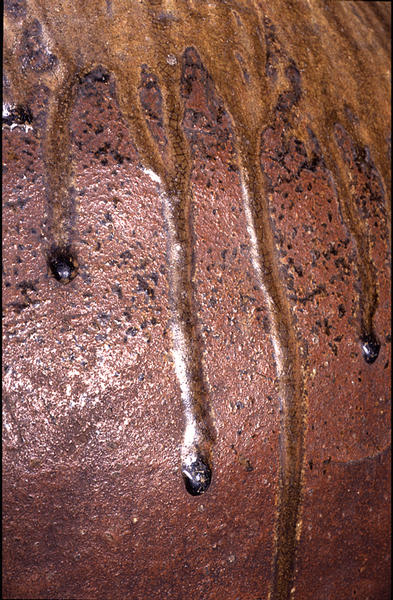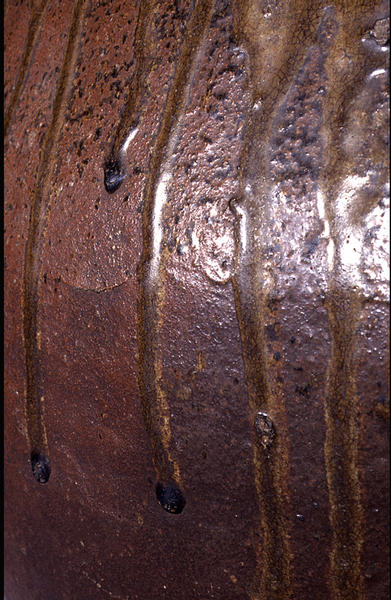Large vat
- Echizen kiln, Fukui pref.
- Late Muromachi period
- 16c
- Echizen ware, natural ash glaze
- H-68 D-59
Catalogue Entry
Late Muromachi period, 16th century
Echizen ware, natural ash glaze
Height, 68.0cm; mouth diameter, 36.5cm;
torso diameter, 59.0cm; base diameter, 25.0cm
The so-called Six Ancient Kilns production structure was established among the kilns of Japan during the 16th century. Echizen and Bizen were the 2 kiln areas which excelled in the production of large jars. The Echizen kilns developed during the 14th century in the broad region that stretches from present-day Ota-cho to Miyazaki-mura and Takefu city, but around the end of the 15th century, this production area concentrated in Ota-cho in the north of this region. There was a shift, particularly during the 16th century, away from the previous form of anagama kiln to large-scale ogama kilns, and production centered on the Dakenodan kiln in Ota-cho where a great number of large jars and large, wide-mouthed jars were produced.
This wide-mouthed jar can be considered a product of the Dakenodan kiln. The short, outward-turning neck-to-mouth area displays a relatively wide spread on the upper edge, and traces of an N-shaped mouth rim remain just below the top of the outer edge of the mouth. The shoulders flow smoothly into the torso and then the torso falls in a straight diagonal line to the small base. These are able representations of this period's characteristic form. A spatula-drawn kiln mark is visible on the shoulder of the work. The principal characteristic of this large wide-mouthed jar is the splendid flow of natural ash glaze that covers the entire upper half of the vessel. The somewhat oxidized character of the glaze and its yellowish brown color is characteristic of the natural ash glazes of this period. SN



